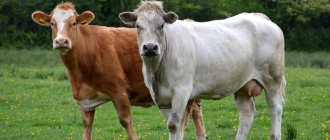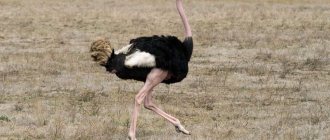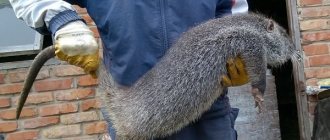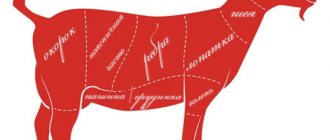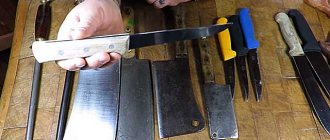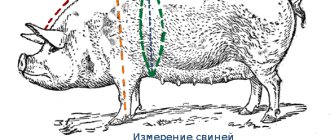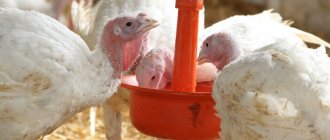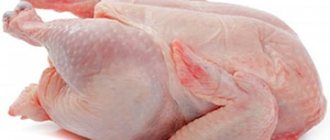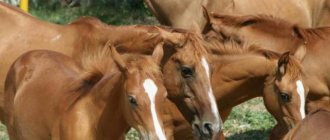Home » Articles about ostriches » How to kill an ostrich
Before you kill an ostrich, you need to make sure it has reached its optimal weight. Proper pre-slaughter preparation guarantees the preservation of good quality meat, since its taste will not be spoiled due to the release of adrenaline. The slaughter must be carried out by a person with experience - sensing danger, a strong bird is capable of killing.
How long does an ostrich grow before slaughter?
Ostriches are slaughtered after they have gained sufficient weight. Since this process depends more on the food supply than on age, they are guided by body weight. Males are sent for slaughter after they gain 120 kg of live weight. Since they are not used to produce eggs, there is no point in keeping them further. Females are considered ready for slaughter if they weigh 100 kg.
To obtain high-quality meat in the required quantity, ostriches are raised for about two years, after which, immediately before slaughter, they are actively fed with high-calorie feed.
What does income consist of?
Raising ostriches offers many profit opportunities. We are talking about the sale of the following components:
- Meat. It is one of the dietary and very healthy products. Ostrich meat contains a lot of protein. It tastes like regular veal.
- Fat. It is actively used by cosmetology and pharmacological companies. Ointments, various creams, and important preparations for humans are made from ostrich fat.
- Feathers. White feathers are actively used in the fashion industry for sewing exotic and stage costumes. The rest goes to the production of comfortable and soft pillows.
- Skin. Also popular among designers. Bags, wallets, belts, and shoes are made from ostrich skin.
- Eggs. One ostrich egg is equal in weight to about 40 chicken eggs. It retains its properties and does not deteriorate throughout the year if stored in the refrigerator. You can sell the shell separately - it is highly valued by artists. It is used for painting and engraving. They don’t shy away from making jewelry from shells.
What you need to know before slaughter
An ostrich differs from a chicken not only in size, but also in character. If you have just started breeding these birds, then you need to learn a few important rules that will help you not only quickly complete the operation, but also avoid serious injuries.
Video: how to properly kill ostriches
- Don't underestimate the power of ostriches . Animals are distinguished not only by their large size, but also by the presence of well-developed muscles, so in no case should you frighten or hit the bird immediately before slaughter. An adult ostrich may well break your bones and also damage your internal organs.
- He who grows it slaughters it . In rural areas there is always a person who kills wild boars. A specialist in his field slaughters a pig quickly and without unnecessary problems. It won’t be possible to do something similar with ostriches, since these birds get used to one owner, who is forced to slaughter. At best, the bird will not allow a stranger to come near it, and at worst, it will seriously injure it. For this reason, you need to make sure that the ostriches get used to you, otherwise you will have to organize a real hunt.
- Stress and its consequences . Slaughter is always carried out far from the place where the livestock is kept, otherwise you will be faced with the fact that the ostriches, who are accustomed to you, will never let you near them again. If the birds see how you mock their “brother”, then in the future you will not be able to gain any favor from them.
Features of ostrich breeding
Breeding ostriches at home is most profitable if the young animals are subsequently sold. But organizing such a business from scratch is very difficult. The main difficulty will be documentation. To breed ostriches you will need to obtain a permit. And that’s not all - after registration, employees of supervisory authorities can visit the company with various checks.
If an entrepreneur is not ready to deal with paperwork, then he can start by breeding ostriches for subsequent sale of meat. But it will be possible to make a profit from this format no earlier than 8–12 months. Having purchased young animals, you will need to wait until they grow up.
Raising ostriches for slaughter is also good because the requirements for feed are not as strict as in the case of breeding. You will not need to monitor your feathers and appearance in general every day.
And even if in this case the profit will be less, but it will be constant, because today the demand for ostrich meat and its eggs is growing very quickly. In this case, there will be fewer problems with the sale of finished products.
An entrepreneur must understand that there is a possibility of losing part of the livestock due to disease and natural changes. Therefore, it is important to stock up on individuals so that they can make up for losses.
How to properly kill an ostrich
Let's consider the features of slaughter, as well as preparation for this procedure. We will talk about mass killing, which is carried out in slaughterhouses, as well as about methods of slaughter at home.
Preparation
You need to have the following tools:
- special stunning hammer;
- sharp knife;
- large metal hook for hanging;
- thick rope.
Slaughter process
Killing poultry is divided into several stages, which must be performed sequentially so as not to spoil the product and not waste extra time.
Stunning a bird
In large workshops, ostriches are stunned using an electric current with a voltage of 240 V, which is applied for 6–7 seconds. This allows you to immobilize several individuals at once. At home, a stunning hammer is used to hit the bird on the head. The blow must land exactly in the center of the head in order for the bird to switch off. Otherwise, you will have a hard time, as the angry ostrich will try to get out of the room or attack you.
Bleeding
After stunning the ostrich, the jugular vein, which is located in the neck, is cut, or the head is completely cut off. Next, using hooks, the carcass is hung upside down so that the blood flows faster than the glass. Only after all the blood has left the body can the next stage begin. Experienced breeders cut the main artery, which is located near the heart. This allows you to speed up the entire process, since the liquid comes out under pressure.
Plucking
After slaughter, it is necessary to properly pluck the ostrich. To do this, it is recommended to invite a specialist who will carry out this procedure, allowing you to subsequently sell the undamaged product. If a novice does the plucking, then the collected feathers will be of poor quality, which will make selling them problematic.
Video: plucking an ostrich It is important not to damage the skin during plucking. Even the slightest tear will significantly reduce the cost. Since leather is sold in squares, you may lose profit altogether.
How to butcher an ostrich?
After plucking, they move on to the skin. When removing, the cut lines must be very precise, otherwise this may later reduce the quality of the meat.
The skin must be removed quickly so that it does not deteriorate.
It is carefully cut off with a sharp knife, passing along the abdomen, the inside of the wings and legs. After stripping, remove excess fat. If intestinal contents or droppings remain, the skin is quickly washed. After this they are salted. The weight of salt should be 2 times the weight of the skin itself. It is then cut and stacked for 60 hours.
Next, the scalp is preserved. If it is too dehydrated, meaning it has less than 15% moisture, it begins to crack and become brittle. Such material will not be sold at a high price. The procedure is carried out in a dry, ventilated room with a waterproof floor. After canning, the skin is stored in a refrigerator.
Ostrich cutting is carried out on a high-quality wooden surface. It consists of dividing into quarters, half carcasses, thighs, drumsticks and boneless meat.
In this case, the cuts are made so as not to touch the muscles. Only in this case will you get ideal meat for fillets and steaks.
The ostrich is butchered quickly while the protein structure of the tissue is preserved. At the end, small muscles and trimmings remain, which are sold as low-grade meat.
Leather dressing: processes
After plucking, the skin must be removed so that it can be further processed and sold. No one will buy small torn flaps, so it is important to familiarize yourself with the specifics of separating the cover from meat and bones.
Skin removal
Immediately after removing all feathers, you must immediately begin to separate the skin:
- To do this, cuts are made in the center of the abdomen, as well as on the inside of the legs and wings. Remove carefully using the blunt side of the knife. The skin should have a shape close to a square.
- If there is excrement, fat, meat or unprocessed food residue on it, then all of the above should be removed before canning.
- Next, the skin is laid out on a clean surface to cool.
Skin removal
Removing the skin is one of the most critical stages. This material brings good income to the farmer, so it is important to prevent defects from occurring.
It is better to entrust the work to a specialist. If this is not possible, you will have to do it yourself. Continuous cuts are made:
- along the wings (from one edge to the other through the stomach);
- from the anus to the beak;
- from the distal joint along the thigh, towards the abdomen.
The skin is carefully removed and left to cool for 15 minutes. After this, it is washed from dirt, the remaining fat and meat are removed with a dull knife, and it is salted (canned). This stage is necessary in order to remove excess moisture and prevent the development of bacteria. The skin is spread inside out and sprinkled with coarse salt 1:2. The raw materials are kept in the refrigerator for 60 hours.
Normally, the amount of moisture in the leather that will be tanned should be at least 15%. Excessively dry skin becomes too fragile and gets damaged in the future. Dressing includes the following stages:
- soaking with four times replacement of the composition, the process takes 48 hours;
- drying;
- stripping (use a dull knife or scraper);
- soaking in an acidic composition for 24 hours;
- tanning for 24 hours in a solution that has tanning properties (aluminum-chromium alum or other compounds are used);
- final drying in a straightened form (the process takes about 48 hours);
- final processing (polishing) – the procedure adds shine and smoothness.
After this stage, the skins are sorted, the price depends on several factors:
- size (the largest size is obtained by releasing adult males for slaughter);
- quality of preparation and preservation (there should be no traces of fascia and fat, complete dehydration is not allowed);
- presence/absence of defects (depends on the experience of the person involved in skinning - skinning).
Proper slaughter of ostriches for meat
African black ostriches are more suitable than other species for breeding in our country with its harsh winters and cold weather. Raising them on a farm is a profitable business - there they lay eggs, hatch their offspring, and when the time comes, they are slaughtered for meat. Emus are also bred on the farm. Every farmer knows how to properly slaughter an ostrich.
Meat is one of the main products of ostrich breeding
What ostriches should I buy?
When starting an ostrich breeding business, a natural question arises - where to start and how to succeed. First of all, you need to choose the most suitable breed. Experienced breeders use one of the following varieties for breeding:
- South African ostrich;
- Australian emu;
- South American rhea.
The first variety is considered the most popular. These are very large ostriches. Adults weigh about 175 kilograms and are about 2.7 meters tall. An interesting feature is that females are much larger in size than males. South African ostriches are chosen not only because of their impressive size, but also because of their ability to quickly reproduce offspring.
What are the benefits of raising exotic birds?
The ostrich (emu, African, Somali) is the largest bird in the world. Some males grow up to 2 and a half meters, and their average weight is 150 kg. Females are smaller in size and weigh no more than 120 kg. At one year of age, an ostrich weighs about 120 kg and is quite ready to be slaughtered for meat. This is best done in a special slaughterhouse, which is equipped in each farm. Emus are slightly smaller than African ostriches.
There is currently a shortage of ostrich meat on the meat market. To provide for everyone, it is necessary to increase its production 10 times. Farmers have not yet been able to feed the thirsty with dishes prepared from exotic ostrich meat. On the farm, large birds feel no worse than in the wild: they lay eggs and reproduce quickly. One female lays about 80 large and tasty eggs during the year.
The Australian emu is also bred for meat.
Main breeds of ostriches and their weight
These birds feel good not only in natural conditions, but also on farms, which has made it possible to tame them quite strongly and raise them for agricultural purposes.
We also recommend reading: How much does half a carcass of pork weigh When turkeys start laying eggs at home - the benefits of eggs Emu ostrich: where it lives, what it eats, interesting facts Dove chick. The birth of a baby pigeon and its development
Domestic ostriches, which you can see on farms, are distinguished by their impressive dimensions and equally decent weight.
Nifulin Forte for the treatment of birds
African black breed (domestic)
This breed is best suited for breeding on a farm.
The African black breed was the result of crossing two other breeds - North African and South African. It is these ostriches that children most often meet during an excursion to a zoo or an ostrich farm. A domestic ostrich can also weigh differently:
- The height of the female on average reaches 2 meters, weight - 120 kilograms.
- Males grow up to 2.7 meters and weigh up to 150-160 kilograms.
An African ostrich egg weighs on average 2.5-3.5 kilograms. Consequently, the weight of a newborn chick fluctuates around 2 kg. With proper nutrition, chicks quickly gain weight and mass. The mass of the chick in the first period of life largely determines how it will develop subsequently.
Under farm conditions, a female African black ostrich produces up to 40-50 eggs. Over the course of a year, this number of young individuals produces about 2 tons of meat. However, it is the African breed that can grow in weight up to 250 kilograms with proper fattening, so many ostriches live on farms for quite a long time. The bird itself is a long-liver and lives up to 80 years, but females can reproduce offspring only until the age of 40.
In the wild, birds begin laying eggs at the age of 4 years, and at home - as early as 2 years. Under special conditions with home feeding and care, a female can produce up to 110 eggs per year, with one egg weighing 1.4 - 1.9 kilograms. Naturally, the weight of the newborn chick in this case will be less.
Why are ostriches not slaughtered on the farm?
Birds are not slaughtered on a farm: birds react inadequately to stress. They start to panic, run away and break everything they come across along the way. Therefore, people who slaughter them must know all the intricacies of caring for birds. With proper care, you can achieve good reproduction of ostriches and prosperous business.
Farmers first use electric shock to euthanize the birds. This is done with special equipment that only a large farm can afford to purchase. Another method: the bird is stunned by hitting it on the head, after which the aorta is cut and the blood is allowed to flow out.
Preparation for slaughter
In order for poultry slaughter to go smoothly, it is necessary to take into account some nuances.
- The ostrich is distinguished by its large size (grows up to 2.7-2.9 m) and extraordinary strength. In case of danger, it can cause serious injury to a person. Therefore, the bird should not be frightened before slaughter.
- The feathered giant gets used to those who feed him and look after him; he trusts only these people. He won’t let strangers get close to him. The appearance of a stranger will alarm the bird. This is why slaughtering should not be trusted to outside experts.
Before killing an ostrich, you need to prepare the slaughter room and tools:
- hammer;
- well sharpened knife;
- strong rope;
- hook to hang the carcass.
Instead of a hammer, you can use a stun gun to immobilize cattle or pigs. This is justified on large farms, because... The equipment is not cheap, or you can rent the device.
What you need to know about ostriches for their slaughter
- Ostriches are unpredictable birds that lend themselves well to taming. This is their positive feature, because otherwise it is impossible to slaughter them for meat. Every owner of an ostrich farm knows that in order to find contact with a bird, a person must become its breadwinner and drinker, and communicate with the ostrich as often as possible. Young ostrich chicks are more easily tamed to the people caring for them. Killing an ostrich that is accustomed to you is very simple - just move it further away from prying eyes, and then, using an electric current, a gun, a hammer and a knife, carry out this bloody task. To bleed a bird, it is hung upside down by its legs and the skin and feathers are removed. Emus are a little more difficult to train than African ostriches.
- It is necessary to be able to correctly kill large birds, which, sensing danger, can injure or kill a person.
The ostrich is a strong bird; if it senses danger, it can cause serious injury.
Slaughter is the last step in obtaining meat. The following factors affect the skin and meat:
- Conditions under which emus are transported. They negatively affect the quality of meat due to the birds’ poor resistance to stress.
- Maintenance of birds before slaughter.
- Preparing emus for slaughter.
Transport for slaughter causes stress in birds due to temperature fluctuations, changes in humidity, and long travel. To avoid the negative impact of transportation, during the transportation of ostriches it is necessary to strictly follow veterinary, sanitary and zoohygienic rules to prevent injury to the birds.
Having received stress during preparation, the birds' biochemical processes are disrupted, and the quality of the meat becomes worse.
Treatment
Ostrich leather can be processed well, but it is a labor-intensive process. The structure of the skin does not allow it to be subjected to mechanical stress, so all stages of dressing are still carried out manually.
Tanning ostrich leather is a very labor-intensive and expensive process.
At 12-14 months, young ostriches are slaughtered for meat. This age is also considered optimal for processing leather; during this period it is most suitable for dressing and reaches the required quality:
- depending on the age and sex of the bird, the skin area is at least 0.8 square meters, the maximum reaches one and a half meters square;
- feather follicles are placed at an ideal distance;
- the bird does not have time to get damaged;
- Young skin is filled with natural oils, so it can resist drying out and does not crack or become woody.
Thanks to these properties, the products are of high quality.
Africa is famous for its developed ostrich farming, where dressing and painting are brought to perfection. Ostrich farms have appeared in Russia recently, so only a few have learned to process the skin at the proper level.
Slaughter process and primary meat processing
To carry out slaughter you need:
- Hammer.
- Knife.
- Separate room.
- A rope and hook on which a slaughtered ostrich is hung.
The slaughter of birds is carried out in slaughterhouses, which are converted for these birds. Emu destined for slaughter - 12-14 month old males weighing 100-120 kg - are collected in lairage pens rather than on the farm. Then, in order of priority, they are taken to a special chamber for slaughter, where they are stunned and bled dry.
They are stunned using an electric shock with a voltage of 235 V - 6 seconds is enough. The birds are then bled by cutting the jugular vein, which is located under the head, or the main artery, located near the heart. Using the latter method quickly and completely bleeds the bird. To protect the workers performing slaughter, the carcass is hung by the legs. After bleeding, the carcass is cut up: feathers are plucked and the birds are skinned. The skin is immediately cleaned and sprinkled with salt. Then it is stored in stacks.
After removing the skin, the carcass is turned over and hung on the wings to make gutting convenient. After cleaning and washing the carcass, it is placed in the refrigerator.
Carcass cutting
To make gutting easier, the carcass is hung by the wings. After removing all the insides, it is washed, cooled, and cutting begins. The carcass can be supplied whole, in the form of half carcasses or quarters. The main share of meat comes from powerful legs - consumers are offered drumsticks or thighs. Boneless meat is the most prized. It is removed with a sharp knife, taking into account the boundaries of the main muscle groups - the farmer receives steak and sirloin meat. The trimmings are of least value.
From an adult African ostrich you get up to 30-40 kg of pure boneless meat, from rhea – up to 12 kg.
Differences in skin quality
Salted hides are evaluated by measuring their area to determine their quality. Wet salted skin is measured using special instruments. Emu skins can be:
The larger the area of the skin, the more expensive it is
The cost of an adult skin is the highest. In addition, skins are distinguished by grade:
- The first grade includes fresh, high-quality preserved skin, with well-scraped meat, having full size - wings, legs and neck. It must be free of cuts, holes and other defects. Third grade, with the allowance of two small defects.
- Not varietal - skins that are stale and poorly preserved (with the smell of ammonia, having a spongy structure).
- Second grade, in which a small defect is allowed.
When is it time to slaughter?
Ostriches are slaughtered after they reach a certain weight. A bird is considered ready for slaughter:
- males – weighing 120 kg;
- females - weighing 100 kg.
There is no point in keeping males after reaching 120 kg; females can be kept for the sake of obtaining eggs.
The rate of weight gain depends on your diet and diet. The better you feed ostriches, the shorter their lifespan. When slaughtering, experienced farmers focus not on the age of the birds, but on their weight. Ostriches usually reach the required weight in the second year of life. Birds being prepared for slaughter are fed a special diet.
Suitable age for slaughter
We are used to looking at ostriches in zoos or on ostrich farms. But now more and more people are breeding these large birds and successfully selling their eggs and meat. Therefore, the question has become relevant: how to kill the largest bird so as to remain intact?
As for the optimal age for slaughtering an ostrich, there are no strict requirements. Experienced farmers advise focusing more not on the age of the bird, but on its weight.
An ostrich is considered ready for slaughter if its weight reaches 120 kg. You can, of course, put the bird on a fattening diet and wait until the weight reaches 140-150 kg. If you are dealing with a female, then its limiting mass is 100 kg.
As a rule, birds reach this weight in the second year of life. It all depends on individual characteristics and diet. Naturally, birds that are being prepared for slaughter are fed more intensively and nutritiously. Due to the fact that ostriches take so long to reach their slaughter weight, their meat is highly expensive and rare.
Where are ostriches slaughtered?
Slaughtering an ostrich is not as easy as regular poultry. And the first difficulty awaits farmers at the very beginning - ostriches cannot be slaughtered on the farm. These birds are so timid that they begin to panic at the slightest noise or danger - they run away, breaking everything in their path. The slaughter of ostriches is carried out in a special slaughter room with strong walls.
If you slaughter ostriches on a farm, the remaining livestock will suffer enormous stress. In the future, the birds will not allow humans to approach them; moreover, they are capable of attacking people if they feel they are enemies. These birds are so strong that they can even kill.
An ostrich being prepared for slaughter is transferred to the slaughterhouse. But so that he does not experience stress, otherwise the quality of the meat will decrease.
The large size of the ostrich, and its strength, become a problem during slaughter. You can't handle him as easily as you can handle a duck or goose. Sensing danger, the giant can show aggression, strike, and even kill. This is why it is so important to tame ostriches. When the time for slaughter comes, they can be calmly taken to the slaughterhouse, without panic or resistance.
Taming begins from a very early age, so that ostriches perceive humans as breadwinners and drinkers.
Tools and equipment are prepared for slaughter:
- stun hammer;
- sharpened knife;
- thick rope;
- metal hook - for hanging the carcass.
On large farms, before slaughter, ostriches are euthanized with electric shock - for this you have to purchase special, expensive equipment.
Rules for keeping ostriches
It will not be possible to breed ostriches in an apartment, so you will have to use land outside the city - your own or rented. These animals tolerate cold weather well, so it is not necessary to heat their house. But in this case you will have to take care of a comfortable and thick bedding. For small baby ostriches, you need to equip a separate room where the temperature will be maintained at +150C on average.
Females grow into adults faster. This takes 1.5 – 2 years. But males become capable of reproduction only after 2 - 2.5 years. The breeding season is from spring to mid-autumn.
When compiling a diet for ostriches, an entrepreneur should not have any particular difficulties, since these birds are capable of eating everything. In their normal habitat, they prefer leaves, grass, tree fruits and insects. When breeding individuals in captivity, it is necessary to ensure a balance between green feed and compound feed. It is enough to feed ostriches twice a day. Small individuals require more frequent feeding - up to 4 times a day. In general, a balanced diet looks like this:
- greens (cabbage, nettle, clover);
- vegetables;
- fruits;
- corn;
- roughage (hay, soybeans, straw);
- supplements with vitamins and minerals.
Everything together should weigh about 3 kilograms - this is exactly the amount of food for one ostrich per day.
Step-by-step instructions for slaughter
The slaughter process consists of several stages that must proceed sequentially. The quality of the product depends on the accuracy of each stage.
Stun
Stunning is carried out in one of two ways:
- Electric shock. A voltage of 240 V is applied to the bird for 6-7 seconds. Several individuals are immobilized at the same time. This method is used on large farms.
- With a hammer. The ostrich is hit on the head - exactly in the center, with a hammer. It is important to hit accurately and firmly so that the bird switches off immediately.
Bleeding
The jugular vein located in the neck is cut in a stunned bird. Or they cut off the whole head. Then the carcass is hung with hooks by the legs so that the blood can drain. When all the blood has flowed out, move on to the next stage.
In order for the blood to flow out as quickly as possible, you need to cut the main artery - it is located near the heart.
How ostriches are slaughtered is described in the video below:
Methods for keeping ostriches
There are several ways to keep ostriches. They are reflected in the rate of development of individuals. Entrepreneurs most often use the following:
- Intensive. Ostrich eggs are sent to the incubator. A small area is used to keep individuals. They get along well with the service staff. Mandatory procedures include: daily cleaning, disinfection of feeders and drinkers, check by a veterinarian and vaccination of all individuals.
- Extensive. Birds grow up in conditions that are as close as possible to their normal living conditions. Workers rarely have contact with ostriches and keep them in a large area.
- Hybrid. Combines the features of intensive and extensive methods.
What mistakes can be made?
Slaughtering ostriches is a responsible undertaking that requires comprehensive preparation. Mistakes that farmers may make due to lack of experience:
- Slaughter in front of the herd. This absolutely cannot be done. The ostriches will get stressed. When they rush to run, they are able to break the fence of the pen.
- Attempts to drive ostriches into the slaughterhouse. If you use force or show aggression, it will cause panic throughout the herd. And individuals destined for slaughter will receive stress, due to which their meat will be of lower quality.
- Incorrect stunning technique. If you strike with a hammer not hard enough or not in the center of the head, the bird may start running, show aggression, and given its strength, the outcome of the fight is unpredictable.
The slaughter of ostriches cannot be entrusted to a beginner - this process requires professional experience. Typically, this responsible procedure is entrusted to farm workers who care for the bird from birth. Ostriches get used to them and trust them. Inexperienced people should not be allowed to slaughter; it should be remembered that an ostrich kills a person with one kick.
Sources:
https://agronomu.com/bok/7500-zaboy-strausa-v-domashnih-usloviyah.html https://selomoe.ru/strausy/kak-zabit-strausa.html https://ogorody-sady.ru/ hozyaystvo/kak-zabivat-strausa-poshagovye-instruktsii.html
Methods of slaughter
Slaughtering an ostrich is not an easy task. Firstly, one person cannot cope with this. Secondly, several important nuances need to be observed. So, for example, slaughter should take place in a separate room, where the bird is placed some time before the last event in its life. Moving should not be stressful, as this can lead to a decrease in the quality of the meat. Below is a video about how breeding the largest birds on Earth can benefit you, video from the ZagorodLifeTV channel.
- Stunning a bird. For this, electric current is most often used; a discharge of 235 volts for 5-6 seconds is sufficient. Therefore, you need to have appropriate equipment on your farm. Stunning can also occur with a strong blow to the head.
- Bleeding. To do this, either the jugular vein or the main artery is cut. After which it is advisable to hang the bird.
- Skinning the carcass, plucking it and skinning it. Ostrich leather is the most expensive and valuable material. The price per square meter of ostrich leather is about $300. Therefore, it is especially important to preserve its integrity and structure.
